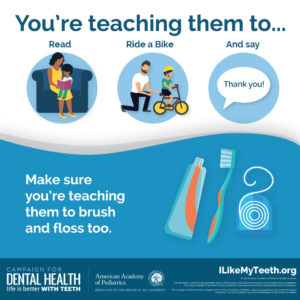Is Fluoride Toothpaste Enough?
Thousands of studies have been conducted on fluoride, fluoridation, and tooth decay. Few topics have been examined more closely. The overwhelming weight of the evidence shows that fluoridated water reduces the rate of tooth decay.
Of all the brands of toothpaste that are sold, 90 percent contain fluoride, a mineral that exists naturally in lakes, rivers and groundwater. Given the widespread use of fluoride toothpaste today, is fluoridated water still necessary? Yes! How do we know? Consider the solid evidence from research that has been conducted since fluoride toothpaste became widely used.
- A study (2018) of over 13,000 U.S. children, examined from 1999-2014 when fluoride toothpaste, professionally applied fluoride, and dental sealants were widespread, showed that for every 100 children with access to fluoridated water, there were 130 fewer decayed surfaces of primary teeth and 30 fewer decayed surfaces of permanent teeth.
- In 2013, the U.S. Community Preventive Services Task Force panel of experts examined 28 studies and concluded that there is “strong evidence” that fluoridated water reduces tooth decay among children.
- Researchers in Australia (2018) found that preschool-age children who didn’t have fluoridated water had an 86% higher rate of potentially preventable hospitalizations for serious dental conditions.
- When two Alaska cities fluoridated their water supplies, their average dental treatment costs for low-income children were comparable. But a study (2022) showed that when Juneau stopped fluoridation, the average cost for cavity treatments soared by 47%. The costs in Anchorage, which remained fluoridated, rose only by 5%.
Fluoridation remains critically important to prevent tooth decay. In the early 1960s, adults — nearly all of whom had grown up without access to fluoridated water — had a per-person average of 18 decayed, missing or filled teeth. Tooth decay rates have fallen significantly for children and adults since then. Still, tooth decay remains the most common chronic childhood disease. And more than half of all teens (ages 12 to 19) have had a cavity in at least one of their permanent (adult) teeth.
Public health officials aren’t the only ones promoting the benefits of water fluoridation. The U.S. military also recognizes the continued need for fluoridated water. In fact, a senior Defense Department official called tooth decay “a major problem for military personnel” and notes that the Department’s policy supporting fluoridation will “directly reduce their risk for dental decay and improve [military] readiness.”
Brushing with fluoride toothpaste twice each day is important. So is seeing a dentist regularly. Many Americans put off appointments because they lack dental insurance and feel they cannot afford the costs. At a time when more than 100 million Americans lack dental insurance, fluoridation offers an easy, inexpensive preventive strategy from which everyone benefits simply by turning on their tap.
So there you have it. When it was first implemented in Michigan back in 1945, fluoridated water was a smart idea — and it still is.


